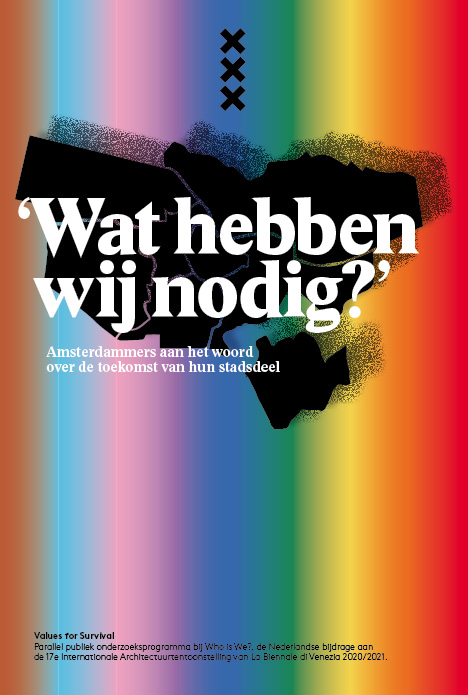«Building on the main question of the 17th Architecture Biennale in Venice ‘How will we live together?’, Zola Can, together with seven ‘story-catchers’, explored what Amsterdammers need in the future. With the question ‘What do you need in the future of the city?’ they did not investigate what people want in the seven boroughs of Amsterdam, because surely everyone wants something, but what they need; a completely different question.
Each district has its own vibe and character. This diversity constitutes Amsterdam’s identity. In the various boroughs, story catchers collected conversations, images, poems and stories for a period of six weeks. Based on what they ‘caught’, this chapter provides an impression of what residents of Amsterdam need in the future.
Due to the COVID-19 crisis, this study took place entirely online. Especially in these times, now that everything seems to have come to a standstill or is slowly starting up again, ideas about the future, about how we then live together in the city, offer guidance.
The process was not always easy. Participation and voice are important processes within the functioning of a (local) democratic society, but are often difficult to organize. ‘Who do you reach?’ and ‘How do you motivate people to contribute?’ are questions that keep recurring in the organizational process of participation. This research project has tested various methods to also be able to shape participation in the time of COVID-19. The results will be used in the Spatial Vision Amsterdam.»— The Editors
On the Design:
«The material presented in this chapter invites you to stay alert to the many levels of information that overlap and coexist. The continuous and colourful through-the-pages backgrounds refer to Daniel Quasar’s LGBTTQQIAAP all-gender-inclusive version of the ubiquitous peace and gay flag, which has been graphically and conceptually reworked with the intention to avoid boundaries, edges and limits. The typography displays several voices polyphonically: that of ongoing quest or question, that of instruction and guidance, that of location and situation, that of citizens’ requests and that of personal reflection. The design of the 16 following pages aims to both gradually and symbolically ‘include’ you but also ‘ask’ (of you and from you), in the same way that participants and authors of this chapter were asked and included.
A map of Amsterdam’s seven districts is also offered, but one that reflects on both the delimited territories and the vast multiplicity of human connections that inhabit the city. It also mirrors the constant quest for space of those who live in this place. A continuous sidebar on the right pages of the chapter reveals the working process and the methods used in this study. Most importantly, you will find the multiple stories and images collected, which provide glimpses and reflections on Amsterdam citizens’ needs. All in all, we invite you to read through these individual and common desires that ask for a more human and cohesive urban future, and aspire to political integration and the encompassing of a multitude of desired – and needed – societal changes.» — Hugo Herrera Tobón



















